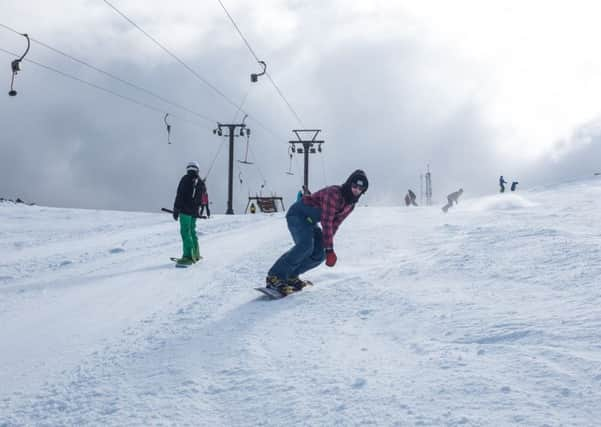Planning to use your Ski-Scotland pass in Iceland? Here's what to expect


My response to the news was probably fairly typical: an initial “Wow! Cool! Iceland!” followed by the realisation that I knew next-to-nothing about skiing up there on the edge of the Arctic Circle. At the Coe Cup at Glencoe a few years back, I met a fearless backcountry skier called Charles Palmer who lived in Iceland and raved about the ski-touring potential of the place, but in terms of actual resorts, my knowledge was more-or-less non-existent.
To be fair, though, even some Icelanders don’t seem to know much about skiing in Iceland. About ten years ago I spent a long weekend in Reykjavik, during which I was assured by a monster-jeep driver taking a group of us past some suspiciously snowy-looking mountains en route to an elevated vantage point from which to view the Northern Lights that, no, there wasn’t really any skiing in Iceland any more as it had been all but finished off by global warming. That, of course, is what people were saying about skiing in Scotland ten years ago too, and evidently the prophets of doom were a little premature in both cases.
Advertisement
Hide AdAdvertisement
Hide AdSo what can an All Areas ticket holder expect from his or her Icelandic skiing experience, having arrived at Keflavík airport on a direct flight from either Edinburgh, Glasgow or Aberdeen? Well, the resorts are not all that dissimilar to Scotland’s in terms of their size and their tree-less, subarctic appearance. The biggest centre in the hills around Reykjavik is Bláfjöll, about half an hour’s drive from the city. It has 19 pistes – four black, ten red, five blue – served by 16 lifts, making it roughly equivalent in size to the Lecht (18 runs and 12 lifts). The maximum vertical descent is similar at both resorts, too – 200m at the Lecht, starting at an altitude of 780m as compared to 220m at Bláfjöll from a highest lift of 700m. What Scottish skiers probably won’t be used to, however, are all the floodlights. Because it’s so far north, sunset in Reykjavik can be as early as 3:30pm around midwinter, so to make the most of the ski season some resorts offer floodlit skiing after dark. You might want to pack clear lenses for your goggles.
While Bláfjöll is easy enough to reach from Reykjavik, Iceland’s other main ski centre is situated in the far north of the country. That said, it also looks well worth putting in the extra miles for. Situated 5km from the town of Akureyri, Hlíðarfjall has more runs than Bláfjöll – 28 in all, served by seven lifts – and it is a little higher, with a top station at just under 1,000m. It offers more space to build up a head of steam, too, with a maximum vertical drop of 455 metres and a longest trail measuring more than 2.5km from start to finish. What’s really special about it, though, is its location. Nestling in a wide, CairnGorm-like amphitheatre beneath 1,100m Brunin and with views out over Eyjafjörður, the longest fjord in Iceland, it has more of a big mountain feel to it – at least, about as much of a big mountain feel as a 1,100m mountain can reasonably be expected to have.
Après-ski options? Obviously Bláfjöll has Reykjavik’s renowned nightlife on its doorstep, while in the north you’re in craft beer heaven. In fact, as of early next year if the weather doesn’t play ball you’ll be able to go on local expert Karl Jónsson’s day-long Troll Peninsula Beer Trail Tour, taking in the breweries of Gæðingur, Segull 67, Bruggsmiðjan and Viking, home of Einstök. Being stormbound has never sounded so enticing.
For details of Ski-Scotland passes visit www.visitscotland.com/see-do/active/skiing-snowsports/passes/; for more on Bláfjöll, visit skidasvaedi.is/english; for more on Hlíðarfjall, visit www.hlidarfjall.is/en Details of the Troll Peninsula Beer Trail Tour will be available soon on www.beertours.is